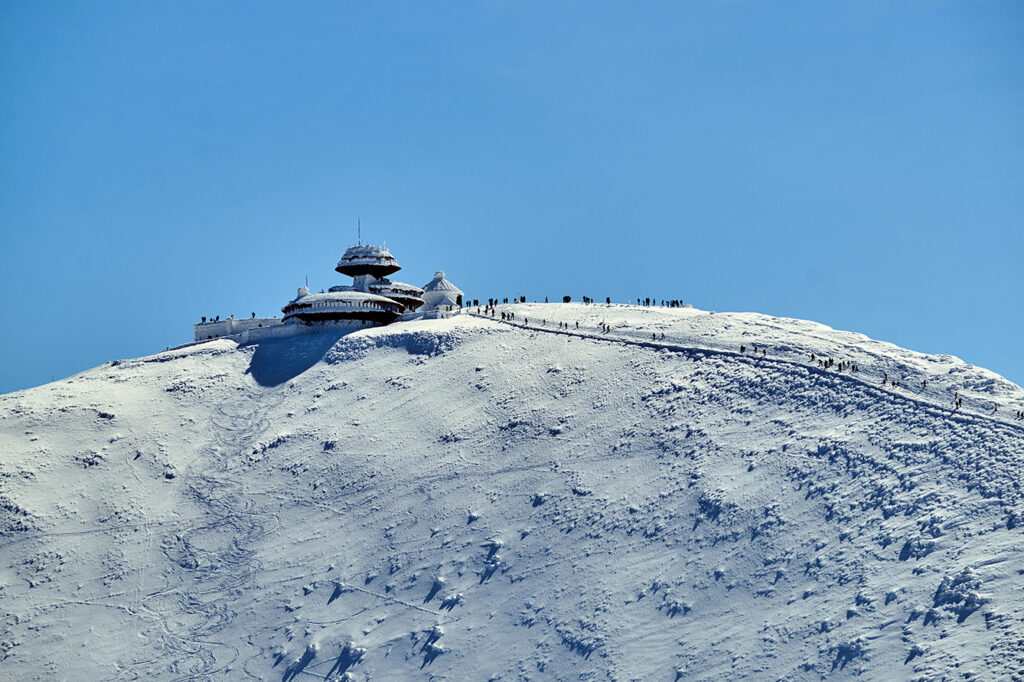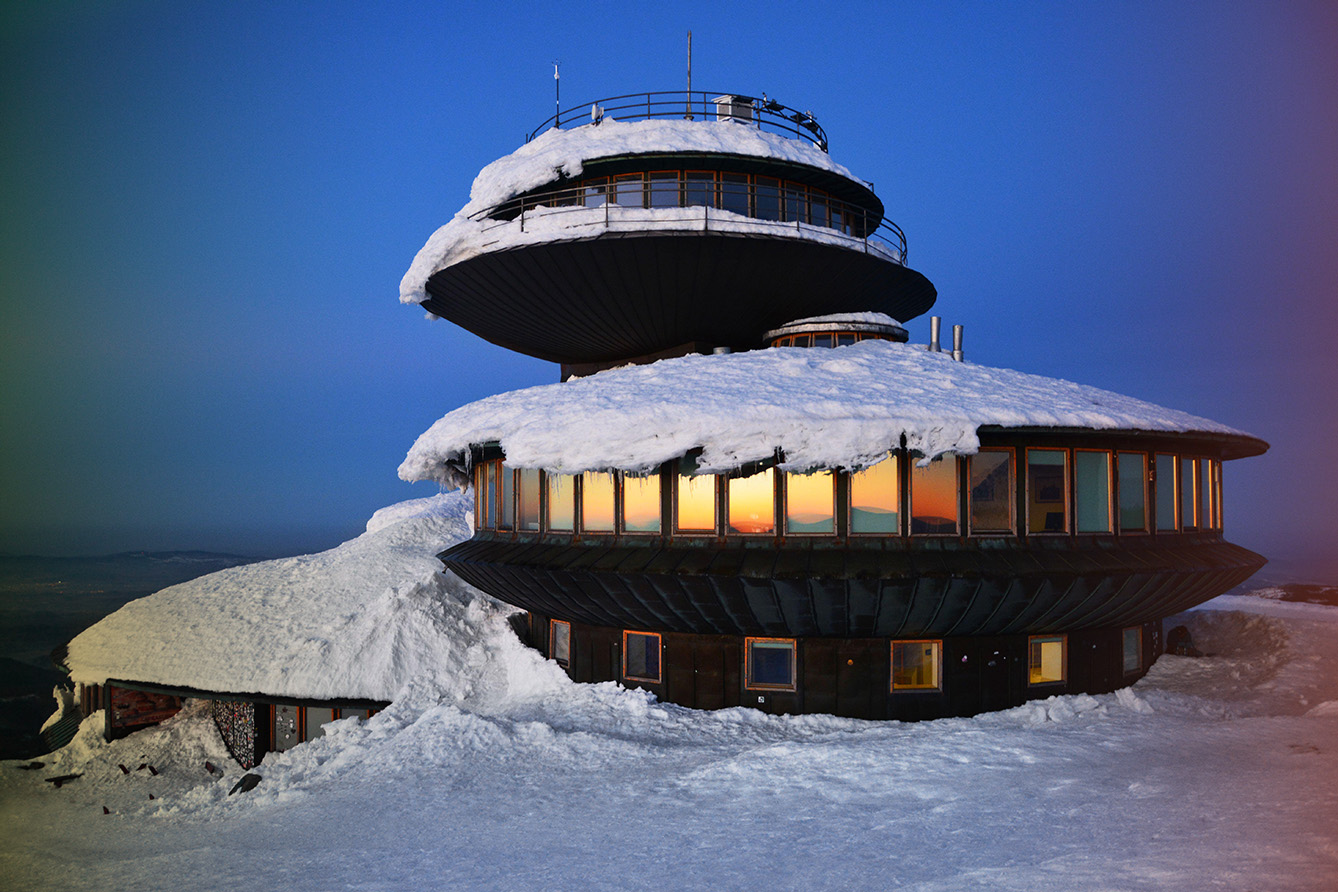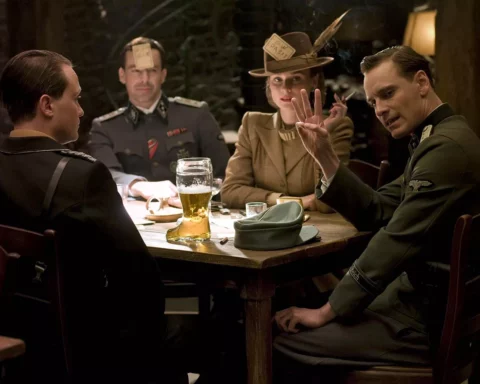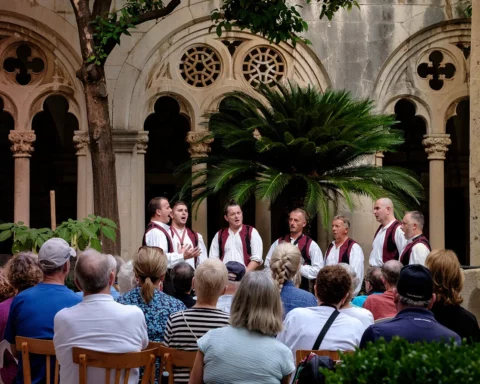We traditionally depict UFOs as flying saucers. But this particular set of strange-looking discs landed on Śnieżka/Sněžka, the highest peak of the Karkonosze Mountains, in 1974 and won’t be leaving any time soon. This particular UFO’s inhabitants – meteorologists – visit in the hopes of recording some of the strongest winds in the region.
Śnieżka observatory inspired by UFO theorists
Although, architecturally speaking, mountain meteorological observatories usually have a unique design with a bit more character than your typical building, the Śnieżka Meteorological Observatory is truly unique. It burrows quietly into the surrounding landscape and looks slightly reminiscent of three flying saucers stacked on top of each other. This modern weather observatory – which replaced a chapel that had previously acted as a retreat for researchers as far back as the 19th century, was built in 1966-1974. Its UFO-esque appearance might seem like an exaggeration, but Engineer Witold Lipiński admitted to this very inspiration. “There was a lot of talk about unidentified flying vehicles in the fifties, and I was fascinated by curves and spherical spaces,” he explained later.
Together with architect Waldemar Wawrzyniak, Lipiński, a skilled innovator, who incidentally also built an igloo-style house in Wroclaw for his family, decided on the building’s three-layer form balanced on a central concrete structure. The bottom level, with the widest diameter, housed a restaurant (though it’s currently closed). Tourists could also visit an exhibition in the middle “disc.” The top tier is reserved for scientists. Regardless of the level, breathtaking panoramic views of both countries are all but guaranteed.

Unique weather conditions on Sněžka
Śnieżka/Sněžka, a mountain whose name translates as ‘Snowy Peak’ (not to be confused with Śnieżnik or Králický Sněžnik in other parts of the mountains) marks the border between Poland and Czechia. It is the highest peak of the Sudetes and the highest in Czechia. But not only is the height superior in Śnieżka/Sněžka. There are also frequently unique weather conditions, especially the winds: record-high wind blowing for ten minutes was as fast as 234 km/h, and some claim to have measured gusts of wind up to enormous 345 km/h.
Even enjoying warm summer in the nearby town of Karpacz (*follow the link to read the story of the peregrinating church from Norway that ended up there), you can expect fridge-like temperatures of 5 degrees Celsius on the top. Sněžka is also extremely lucky to be a border mountain. During the last two centuries, countries came and went. Most wanted to find a way to make the mountain a part of their border, from the Austrian-Prussian demarcation line after the Napoleonic period to the German-Czechoslovakian border before World War II, the Polish-Czechoslovakian, then Czechia, afterward.
These two factors, namely the unique climate and location, attract a variety of visitors: tourists, pilgrims, and of course – scientists, drawn by the scientific potential of Śnieżka’s weather-related anomalies.
See Also: The Croatia’s Višnjan Observatory Making Sure “Don’t Look Up!” Stays Fiction







